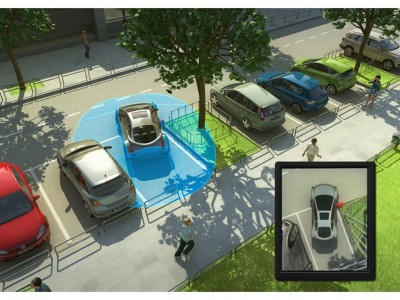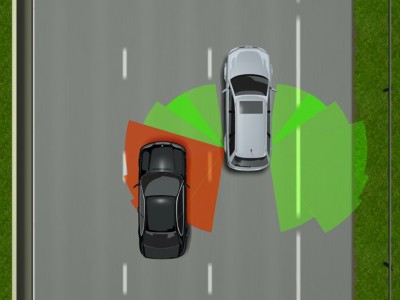From Saturday, Nov 23rd 7:00 PM CST - Sunday, Nov 24th 7:45 AM CST, ni.com will undergo system upgrades that may result in temporary service interruption.
We appreciate your patience as we improve our online experience.
From Saturday, Nov 23rd 7:00 PM CST - Sunday, Nov 24th 7:45 AM CST, ni.com will undergo system upgrades that may result in temporary service interruption.
We appreciate your patience as we improve our online experience.
Derek O'Dea, Valeo

Vehicle safety systems are becoming increasingly complex due to the growth of software components, and development timelines are shorter. We needed to develop a system that reuses employee skillsets, software, and hardware to more efficiently design and test automated parking systems.
Using the NI platform, we can go from design to test with minimal system changes. We can adapt to changing requirements and complete our projects within a shrinking timeline.
Valeo is a €16.5 billion company and one of the world’s largest component and technology suppliers for many leading car brands. The company’s measurement equipment and tools group validates components used in safety systems, which are becoming increasingly complex due to the growth of software components. Simultaneously, the traditional two-year automotive development cycle continues to erode, leading to compressed timelines. Designing to customer demands is key, but customers seldom know everything they want at the onset of design. This results in a tight project timeline that is complex in nature and dynamic in terms of features and requirements.
An area of particular interest for Valeo is automated parking systems. These camera-based systems involve complex embedded systems with multiple design stages. The first stage is to tune the computer vision algorithms. To do this, we use NI’s modular PXI hardware control platform that can address a wide range of measurement types to interface with various sensors and automotive networks. We typically deploy a PXI chassis in a vehicle and interface it to live camera, ultrasonic, vehicle bus, and environmental sensor data from typical driving situations. We use this live data to train and validate our computer vision deep learning algorithms at the bench later. After training the algorithms, we deploy them onto the actual electronic control unit hardware that ships with the camera system. This introduces the challenge of thoroughly testing the controller with the deployed software.
We need to comprehensively test the controller in real-life scenarios; however, expensive road tests make it difficult, if not impossible, to test every possible use case. By performing hardware-in-the-loop (HIL) testing, we use a mixture of simulated and real environmental sensor data to trick the embedded controller under test into operating as though it were in the real world. Then we can run through thousands of possible scenarios to ensure the reliability and safety of the system.
For our test setup, we use the same PXI hardware in a different role. Rather than interfacing to physical sensors, the PXI performs extensive HIL testing by simulating all the sensor inputs that would normally exist if the controller were physically installed in the vehicle. Using a graphics card and a host of PXI I/O, we create a virtual car inside a virtual world that our device under test (DUT) can control. This helps us to assess how well our device can control the virtual car. In short, we use software to simulate a test environment for a complex system of sensors and controllers to validate their capabilities.
In parallel we also re-inject the sensor data we captured earlier in the vehicle to the controller so the DUT is receiving sensor data exactly as it would in the car. Time synchronization of the multiple sensor streams is important in order to have the same test results at the HIL bench and in the real car—here the full PXI time sync is key.
This flexible test system based on modular NI hardware satisfied our need to respond to changing features and requirements, but we still had the challenge of tight schedules. To address this, we focused on efficiency through the reuse of tools and by equipping our staff with the knowledge needed to work on multiple parts of the project.
On the tools side, we can look at software IP as an example. We create common software tools using LabVIEW that we can implement through multiple stages of the design process and on multiple projects. Imagine using the same test code from project conception to full scale production. That is our goal, and we typically reuse 80 percent of the code.
While we have enjoyed great success in code reuse, we must consider that hardware elements change with each camera module. Every emerging generation of camera typically has a new custom communications protocol. By using FlexRIO, an FPGA configurable add-on for PXI modules, we can limit our redesign to just an adapter board that acts as an interface between the DUT and the rest of the system. Using the PXI platform, we get the flexibility we need, while still ensuring we can reuse all the common elements such as the DAQ functionality and HIL environment.
Another key part of our ability to meet rapidly approaching deadlines lies with our people. We have built LabVIEW proficiency throughout the team. Engineers can work on FPGA code as well as data acquisition, vehicle interface, and HIL simulations. Thanks to the NI platform, when we receive a new project, we have maximum reuse of the team, software IP, and the core hardware system. The only thing we need to change from project to project is a single FlexRIO adapter module. The team remains motivated because we can shift them to different functions within the project and no one grows tired of remaining on a single task. This is a huge asset to the efficiency of the team and has been a great success for us.
Using the NI platform, we are keeping pace with our demanding industry’s continual evolution. As new technology is introduced and timelines continue to press us to work faster, we know we can meet the challenge by operating efficiently. Reusing skillsets, software, and hardware empowers us to not only be successful in our present endeavors, but also gives us the confidence to welcome future challenges.
Derek O'Dea
Valeo
Dunmore Rd
Tuam
Ireland


